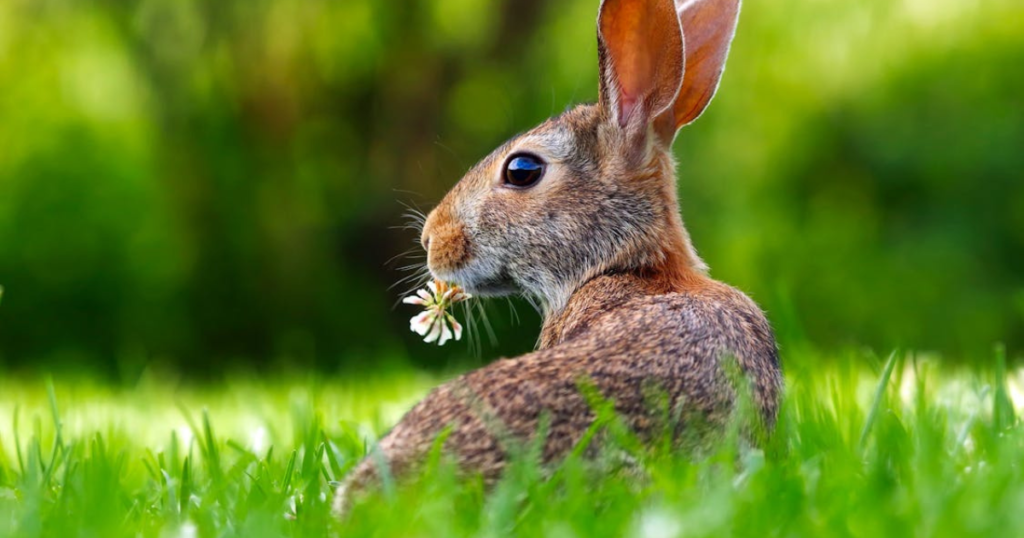Grass is one of the most abundant and widespread plants on Earth. It covers vast landscapes, from open meadows to savannas and even suburban lawns. But what animals eat grass? These grass-eating animals, known as herbivores, play an essential role in maintaining the balance of ecosystems. Some graze on grass exclusively, while others add it to their diet along with other vegetation. Let’s explore the fascinating world of animals that depend on grass for their survival.
Cows
When we think about grass-eating animals, cows often come to mind first. Cows are ruminants, which means they have a special digestive system that allows them to break down tough plant fibers. Their four-chambered stomach is designed to help them digest grass efficiently. Cows graze in fields, eating large amounts of grass daily. The grass is chewed, swallowed, and then regurgitated as cud, which is chewed again for further digestion. This process allows cows to extract as many nutrients as possible from their grassy diet.
Sheep
Sheep, like cows, are also ruminants and graze on grass throughout the day. Their small, sharp teeth allow them to nibble the grass close to the ground. Sheep’s digestive system is similar to that of cows, making them excellent grass eaters. Farmers often use sheep to maintain pastures and fields because their grazing helps keep the grass trimmed while preventing the growth of invasive plants.
Horses
Horses are non-ruminant herbivores, which means they don’t have a four-chambered stomach like cows and sheep. However, they are still highly efficient grazers. Horses have large, flat teeth that are perfect for grinding down tough grass. While they primarily eat grass, horses may also consume hay and other plant material, especially when fresh grass is unavailable. Horses are selective grazers, meaning they prefer certain types of grass and may avoid others.
Goats
Goats are versatile eaters known for their ability to consume a variety of plant types, including grass. While goats enjoy eating grass, they are not as picky as cows or sheep. Goats will also eat shrubs, weeds, and even tree bark if given the chance. Their curious and adventurous nature leads them to explore different types of vegetation, making them useful for clearing overgrown areas that other animals might avoid.
Deer
Deer are graceful, wild herbivores that graze on grass and other plants. While deer are often seen browsing on leaves, shrubs, and fruits, grass makes up a large portion of their diet, especially in spring and summer when it’s abundant. Deer are selective feeders, choosing the most nutritious and tender grass shoots. Their ability to adapt to various habitats means they can thrive in forests, meadows, and even near human settlements.
Elephants
Elephants are the largest land animals on Earth, and they have massive appetites to match their size. Grass forms a significant part of their diet, particularly for African elephants. An adult elephant can consume hundreds of pounds of grass each day! Their large, flat molars allow them to grind down grass, and their trunks help them gather it efficiently. Elephants also eat tree bark, leaves, and fruits, but grass is a staple food, especially during certain seasons.
Bison
Bison, or buffalo, are iconic grass-eating animals that once roamed the plains of North America in huge herds. They are ruminants like cows and sheep, which means they can digest tough grass effectively. Bison are well-suited to grazing in harsh environments, such as dry grasslands, because their digestive system allows them to break down coarse grasses that other animals might find too difficult to eat.
Rabbits
Though rabbits are small, they are avid grass-eaters. Rabbits are lagomorphs, not ruminants, but they have a unique way of processing plant material. Rabbits practice a behavior called “coprophagy,” where they eat their feces to extract more nutrients from their food. Grass is a crucial part of their diet, providing the fiber they need to keep their digestive system healthy. Pet rabbits are often given hay, which is dried grass, to meet their dietary needs.
Zebras
Zebras are herbivores that primarily eat grass. Native to Africa, zebras have adapted to grazing on the tough, fibrous grass found on savannas and plains. Their strong teeth allow them to chew grass that many other animals would avoid. Zebras, like horses, do not have a multi-chambered stomach, but they can still digest grass effectively thanks to their powerful digestive enzymes.
Guinea Pigs
Guinea pigs, common household pets, are small grass-eating rodents. In the wild, they graze on grass and other plants, and in captivity, they are often fed hay, which serves as a substitute for fresh grass. Their digestive system is designed to process fibrous plant material, and they require a constant supply of grass or hay to keep their digestive system functioning properly.
Kangaroos
Kangaroos, native to Australia, are known for hopping across open grasslands in search of food. Grass is a significant part of their diet, although they also eat shrubs and leaves. Kangaroos have a chambered stomach similar to ruminants, allowing them to digest grass efficiently. They are well-adapted to living in arid environments where grass is often sparse, and they can survive on tough, dry grasses that other animals might avoid.
Llamas And Alpacas
Llamas and alpacas, native to the Andes Mountains, are grazers that primarily eat grass. These animals are often used as pack animals, but they also play an important role in managing grasslands by grazing on grass. Like other grass-eating animals, they have a specialized digestive system that allows them to extract nutrients from fibrous plants.
Pandas (Young)
While pandas are famously known for eating bamboo, young pandas, especially in the wild, may graze on grass when bamboo is scarce. Grass forms a small but significant part of their diet, particularly when other vegetation is limited.
Why Do Animals Eat Grass?
Grass is a vital food source for many animals due to its abundance and nutritional value. While grass may seem simple, it contains carbohydrates, fiber, and minerals that provide energy and maintain digestive health. Herbivores that eat grass have evolved specialized teeth, digestive systems, and behaviors to help them process this tough plant material effectively.
Conclusion
From the massive elephant to the tiny rabbit, a diverse range of animals depends on grass for survival. These herbivores play crucial roles in their ecosystems, from maintaining grassland health to supporting the food chain. By understanding the animals that eat grass, we can better appreciate the delicate balance of nature and the importance of these grazers in keeping ecosystems functioning smoothly.






